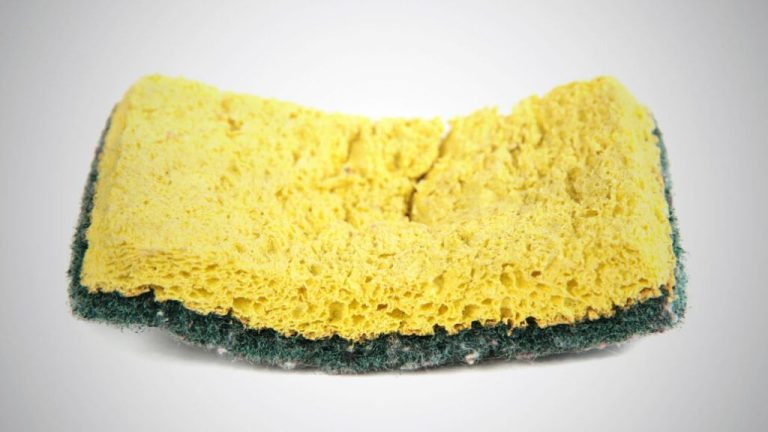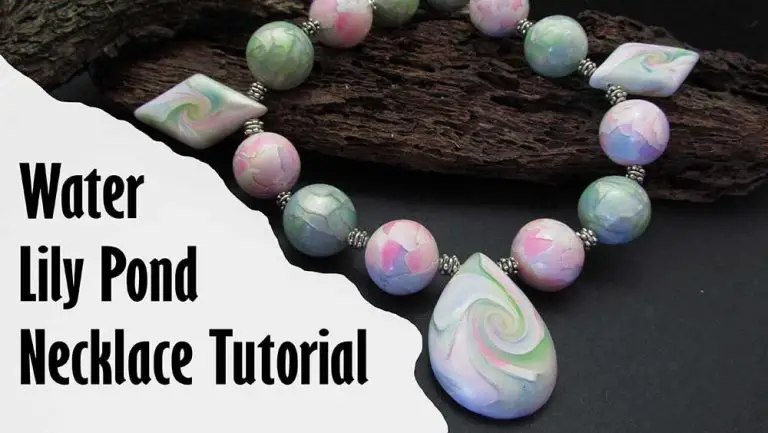Do Ceramic Bells Ring?
Ceramic bells have long been appreciated for their delicate beauty and musical tones. Though often thought of as purely decorative objects, ceramic bells have been created and used by cultures around the world for thousands of years. Their pleasing sounds and attractive forms make ceramic bells a popular choice for adding charm and ambiance to homes and gardens.
This article explores the nature and history of ceramic bells. We’ll learn about how they are made, the science behind their acoustics, different ways they are used, and whether they actually “ring” in the sense that metal bells do. We’ll also cover caring for and buying ceramic bells, and look at some especially notable examples through history. If you find yourself drawn to the lovely sound of ceramic bells, read on to discover more about their creation and capabilities.
What Are Ceramic Bells?
Ceramic bells are musical instruments made out of clay or porcelain that produce a ringing sound when struck. They date back thousands of years and have been used in cultures all over the world for religious, decorative, and entertainment purposes.
Ceramic bells are made from natural clays, porcelain, or ceramic mixtures that are shaped and fired in a kiln at high temperatures. The materials used affect the look, sound, and durability of the final bell product.
There are several main types of ceramic bells:
- Chime bells – Small, hollow bells often strung together on a rack or hung from ribbons.
- Bell charms – Tiny ceramic bells used for decoration, jewelry, or sewn onto clothes.
- Standalone bells – Individual, larger bells mounted on a base or handle.
- Bell sets – Multiple bells of graduated sizes mounted together to play melodies.
Ceramic bells come in all shapes, sizes, and designs. They can be glazed, painted, or left plain. The type of ceramic bell determines how it can be played and what sound it will make.
How Ceramic Bells are Made
Ceramic bells are made through a multi-step process that starts with shaping the clay and ends with firing and glazing the finished bell. The manufacturing process requires patience, skill, and artistic talent to create a high-quality ceramic bell.
The process begins with wedging and kneading natural clays to remove air bubbles and achieve an even consistency. Next, the clay is thrown on a potter’s wheel or hand-shaped using molds to form the basic bell shape. Details like handles and decorative elements are added by hand at this stage.
Once shaped, the bells are set aside to air dry slowly and evenly. Rushing the drying risks cracking or warping the clay. The dried bells are then bisque fired in a kiln at over 1000°C to permanently harden the clay through sintering. The bisque firing prepares the porous surface to accept glazes.
Glazing involves brushing colored glazes onto the bisque-fired surface. The glaze melts and fuses to the clay body during a second glost firing at an even higher temperature. The firing temperature and the composition of the glaze determine the final colors and surface qualities. The bells are then ready to be rung and enjoyed.
Acoustics of Ceramic Bells
Ceramic bells produce sound through vibrations when struck. The ceramic material vibrates and compresses surrounding air to create sound waves. There are several factors that affect the tone and resonance of ceramic bells:
The shape and structure impacts the vibration. Bells with tall domes and open mouths vibrate more freely and produce clearer tones. The thickness also matters, with thicker ceramic creating lower pitches.
Material composition affects the internal damping and sustain. Porous ceramics muffle the sound, while dense stoneware rings brighter and longer. The firing temperature and glazes applied can also influence the acoustics.
The way the bell is struck makes a difference. Hitting the crown versus the side creates different vibrations. Striking with a hard mallet rather than soft mallet produces louder, crisper tones.
Larger bells have lower pitches, while small bells ring higher. The size along with factors like wall thickness determine the fundamental frequency and harmonics produced.
Ceramic bells can be tuned to have specific musical pitches and timbres. Careful control of shape, material, and firing leads to optimal acoustic properties and desired ringing tones.
Uses of Ceramic Bells
Ceramic bells have long been used for decoration, wind chimes, and music. Their pleasant tinkling sounds and ornamental designs make them popular household items. Ceramic bells are commonly hung from doorways, patios, and gardens as wind chimes. The hollow bells create soothing, peaceful notes when stirred by a breeze. Inside the home, ceramic bells displayed as wall hangings or ornaments provide visual beauty and acoustic charm.
In music, ceramic bells produce brighter, crisper rings compared to metal bells. Musicians may play tunes by striking ceramic bell sets with mallets. The resonant tones stand out clearly even among other instruments. In some cultures, ceramic bells play roles in spiritual ceremonies or religious worship.
Ceramic bells also hold cultural and historical significance in some regions. They were among the earliest musical instruments, with evidence of ceramic bells dating back thousands of years in China, Egypt, and the Mediterranean. Ancient bell designs and playing traditions still carry forward today as cultural heritage.
With their decorative flair, musicality, and cultural meaning, ceramic bells continue to fill homes and lives with artistry, sound, and tradition.
Do Ceramic Bells Ring?
Whether ceramic bells can be said to “ring” or not is largely a matter of semantics around the exact definition of the word “ring.” When we talk about bells “ringing,” we usually imagine the clear, sustained tone of a metal bell. The sound of a ceramic bell when struck is more of a short, percussive “clang” than an extended, reverberating “ring.”
The key difference lies in the material properties of ceramic versus metal. Metals like bronze or iron are elastic and will vibrate when struck, producing a sustained ringing tone. Ceramics are brittle and will only vibrate for a short time before the energy dissipates. While metal bells produce sound through vibration, ceramic bells work by transferring energy into short, clipped impulses of sound.
So in summary, ceramic bells do not “ring” with the sustained resonance that metal bells do. Their sound is better described as a solid “clang” or “strike.” Ceramic lacks the elasticity and internal vibration needed to produce a ringing tone.
However, some ceramic bells come close to imitating the sound of ringing metal bells. Advances in ceramic engineering allow some clay bell designs to sustain tones for longer. So for ceramic bells that produce more of an extended tone, one could make the case that they do technically “ring,” just with significant differences from classic metal bells.
Caring for Ceramic Bells
Ceramic bells require some care and maintenance to keep them looking and sounding their best.
Cleaning and Polishing
Regular gentle cleaning helps keep ceramic bells free of dust and dirt that can mute their resonant tones. Use a soft dry cloth to wipe the surface, taking care not to abrade the glaze. For more thorough cleaning, use a mild soap and water solution and a soft cloth or sponge. Avoid abrasive cleaners or scrubbing that could scratch the surface. After washing, rinse thoroughly and wipe dry.
Over time, mineral deposits from water and handling can build up and dull the surface. A ceramic polish specifically formulated for glazed ceramics can restore the shine. Apply a small amount of polish to a soft cloth and rub gently in a circular motion. Remove any excess and buff to a luminous finish.
Preventing Cracks and Damage
While ceramic bells are durable, they can crack or chip if mishandled. Avoid dropping them or hitting them against hard surfaces. Store them carefully on soft surfaces and avoid overstacking. Protect bells from rapid temperature changes that could induce cracks from expansion and contraction.
Avoid using metal strikers, as these can damage the glaze over time. Use a wood, rubber, or other soft mallet. Check regularly for hairline cracks, which can worsen over time. Refrain from playing cracked bells, as the vibrations exacerbate damage.
Notable Examples
Ceramic bells have been used in cultures around the world for centuries, and many stand out as exceptional examples of the bellmaker’s art.
The Sang Hwang-bu Bell, cast in 771 AD, is one of the oldest surviving ceramic bells. This massive bell was commissioned by the Silla Kingdom in ancient Korea and represents an early pinnacle in ceramic bell casting technology.
The Nanjing Yunhu Temple Bell, cast in 1488 AD during the Ming Dynasty, is a beautifully decorated Chinese temple bell with scrolling lotus flower designs. At over 10 feet tall and weighing over 10 tons, it demonstrates the grand scale ceramic bells could achieve.
The Porcelain Tower of Nanjing, built in 1407 AD, incorporated over 100 ceramic bells and chimes into its multi-story pagoda design. Though the tower itself no longer stands, it represents the integration of bells into Chinese architecture.
One modern example is the Millennium Bell in Kyoto, Japan, created by famous potter Kitaoji Rosanjin in 2000 AD for the city’s millennium celebration. Its innovative shape incorporates 2,000 ceramic pieces joined together in a lattice pattern.
Unique contemporary ceramic bells include those with unusual shapes like spirals or waves, incorporations of multiple colors, bells sculpted into animal shapes, and collaborations between ceramic artists and bell founders.
Buying Ceramic Bells
When shopping for ceramic bells, you’ll want to look for bells made by reputable artists and manufacturers that produce high quality products. Here are some tips on where to shop and what to look for:
Shopping Locations:
- Local ceramic studios and galleries – These often carry one-of-a-kind, handmade ceramic bells made by local artists. You can find unique designs here not sold elsewhere.
- Craft fairs and art shows – Outdoor fairs are a great place to find ceramic artists selling their wares, including beautifully crafted ceramic bells.
- Online shops – Large sites like Etsy have thousands of ceramic bell listings from artisans all over the world. Amazon and other online retailers also carry mass-produced ceramic bells.
- Import shops – Retailers specializing in imported goods from places like China, Thailand, and Mexico often have affordable ceramic bells in colorful glazes.
What to Look For:
- High firing temperature – Bells fired at higher temperatures (around 2,200°F) will be more durable and have a nicer finish.
- Glaze quality – Look for smooth, consistent glazes without bubbling, cracking, or peeling.
- Clapper fit – The clapper (inside ringer) should fit loosely to produce a pleasant ring when struck.
- Sound – Give the bell a ring to make sure it produces a sustained, resonant tone.
- Weight – Heavier, thicker bells tend to produce better sound.
- Personal taste – Choose a size, design, and color you find appealing.
Taking time to find well-crafted ceramic bells you truly love can be very rewarding. Listen to the tones, feel the textures, and let your artistic taste guide you to bells that speak to you!
Conclusion
In summary, ceramic bells are bells made from ceramic materials like clay or porcelain that have been fired in a kiln to harden and set their shape. While metal bells ring from the vibration of metal, ceramic bells produce sound through the vibration of the ceramic material itself when struck. The acoustics of ceramic bells depends on factors like shape, thickness, materials, and firing temperature. Ceramic bells have decorative and musical uses around the world, such as on Christmas trees, wind chimes, and in handbell choirs. When cared for properly, quality ceramic bells can last for generations.
Ceramic bells have a long history and continue to bring joy through their visual beauty and gentle sounds. With proper technique, ceramic bells can produce notes just as well as their metallic counterparts. While not as loud or resonant, ceramic bells have their own charm that speaks to many people. So remember, though they may not ring in the traditional sense, ceramic bells certainly have their own voice worth appreciating.






